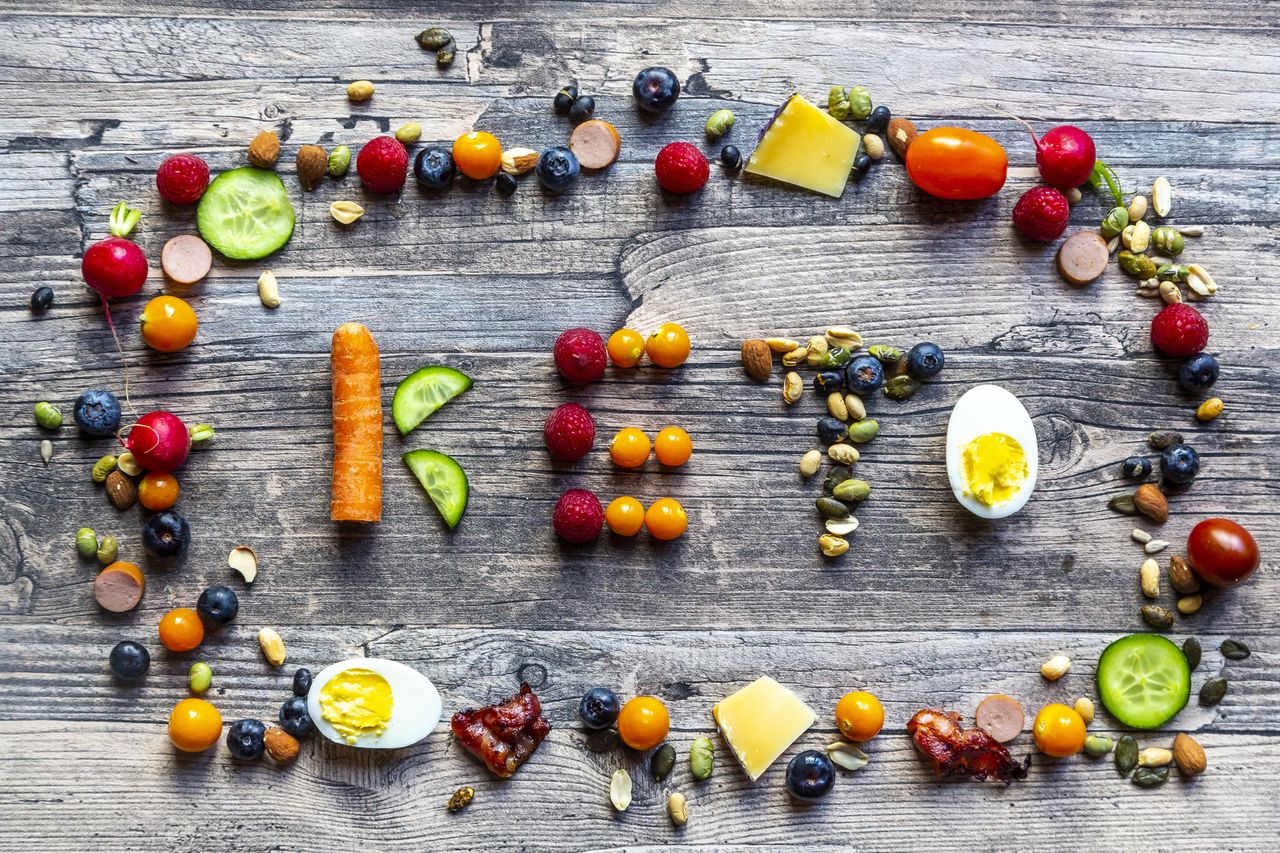A leading clinical nutritionist's verdict on the most popular and best diets of 2020
Which is the best diet for you this year?

Fed up starting a diet in January and finishing it in February?! Make this year different by being armed with all you need to know about the latest weightloss trends.
Are the most popular diets always the best? How do you sort fad from fab? We asked Clinical Nutritionist Suzie Sawyer, who gives us the lowdown. She's picked the five diets likely to be the biggest this year, and explains how to pick the very best diet in 2020 for you (and what you need to watch out for…)
Best diets 2020
Keto diet
What it looks like: Eggs and bacon for breakfast. Chicken and salad for lunch and steamed fish with mixed vegetables for dinner.
How it works: It’s super-low carbs, with high fat, pushing the body into ketosis; where the body is forced into breaking down fat for fuel. Whilst there’s certainly merit in keeping a diet low in carbs overall, which reduces the release of the fat-storing hormone insulin, following the Keto for a prolonged period can lead to acidosis or at the very least mood swings, constipation and energy lows.
However, it’s certainly very effective for weight loss and you can choose the rate at which you want to lose weight by closely monitoring the total number of calories you’re eating on a daily basis. For example, if you want to lose a kilo per week (a sensible approach), an average-sized woman would need to eat around 1,500 calories daily. Around 65% of those calories would come from fat.
Pros and cons: Weight loss can be achieved quickly, and with around 30% of calories coming from protein, the body won’t lose muscle mass, which frequently happens on weight loss plans. However, you’re likely to have quite a few nutrient deficiencies especially calcium as the diet contains no dairy or other calcium-rich foods such as soya milk. If you’re following a diet like this you might want to consider a high potency daily multivitamin and mineral such as Alive! Ultra Wholefood Plus.
Sign up for the woman&home newsletter
Sign up to our free daily email for the latest royal and entertainment news, interesting opinion, expert advice on styling and beauty trends, and no-nonsense guides to the health and wellness questions you want answered.
Verdict: Probably not a diet for the long-term but can be effective for weight loss in the short term, with the potential of reducing the growing obesity crisis in the UK.
Paleo Diet
What it looks like: Spinach, mushroom and tomato omelette to start the day. Wild salmon salad for lunch and organic roasted chicken with mashed sweet potatoes, broccoli and peas for dinner. It’s not going to be cheap!
How it works: It’s basically a throw-back to caveman times! So, it’s based on meat, fish, vegetables, fruit, nuts and seeds. However, out go dairy, sugar, grains, legumes and beans. The good news is that since it’s based on healthy eating principles, with foods that are not processed or pumped full of hormones, it’s certainly not in ‘fad’ territory.
Pros and cons: Your diet will be very ‘clean’ with no refined foods allowed. It naturally follows that you’ll be getting a great range of nutrients. However, the Paleo Diet could lead to deficiencies in the mineral iodine, since dairy is one of the main sources. We know from our National Diet and Nutrition Survey (NDNS)2 data that 17% of women of child-bearing age are iodine-deficient. Iodine is key for growth and brain development during pregnancy.
Verdict: It’s not a fad but it carries a high price tag!
Vegan diet
What it looks like: Homemade beans on wholegrain toast for breakfast. Chunky vegetable soup with barley and tofu for lunch and vegetarian goulash with wholegrain brown rice for dinner. You’ll not be hungry on this one!
How it works: The vegan diet contains no foods from animal sources at all, therefore it will naturally contain lots of nutrient-rich fresh fruits and vegetables, wholegrains, beans and legumes. Another positive of the diet is that since our food chain is far from perfect with tonnes of animal products being pumped full of chemicals and antibiotics, you’ll be escaping their onslaught!
Pros and cons: The vegan diet is generally nutrient-dense with good levels of lots of key trace minerals such as magnesium, potassium and calcium. However, vegans can sometimes miss out on vital vitamins, especially vitamin B12. Interestingly, tempeh is taking over from tofu in terms of popularity as a vegan protein source. Tempeh contains probiotics, which naturally encourage the body’s production of vitamin B12, so this could help to plug some of the gaps. However, taking a daily multivitamin is recommended.
Verdict: Veganism is certainly increasing in popularity, but many people have had to revert to eating some animal protein due to varying health issues, often associated with low protein intake.
Zone diet
What it looks like: Egg white omelette with spinach and mushrooms for breakfast. Chicken salad with avocado for lunch and roasted cod with veggies for dinner.
How it works: It’s based on being ‘In the Zone’ where your body better manages the insulin response and has more control of inflammatory issues. The diet requires a balance of 1/3 protein and 2/3 carbohydrates with just a small amount of monounsaturated fats from avocado, olive oil and nut butter.
Pros and cons: The great news about this diet is that it includes plenty of colourful foods every day and is much more likely to give the body the nutrients it needs; richly coloured fruits and vegetables are loaded with vitamins and minerals, plus antioxidants although starchy veg and highly sugary fruits such as bananas should be avoided.
However, it’s lacking in essential polyunsaturated omega-3 fats found in oily fish, nut and seeds. These fats are needed for hormone balance, glowing skin, healthy eyes, heart and brain. However, any diet that reduces inflammation can certainly promote longevity.
Verdict: Most criticism of this diet has been about its sustainability and the difficulties in maintaining it with a busy lifestyle.
Intermittent fasting
What it looks like: Eggs, smoked salmon and avocado for the first meal. Chicken, broccoli and quinoa for dinner.
How it works: The usual routine is to skip breakfast and eat one meal around 1pm and another around 8 pm. The body is then fasting for 16 hours. This diet will produce weight loss because the body burns fat when it’s in the post-absorptive phase of digestion.
This means it’s not been fed for a while and insulin levels are low, allowing fat burning to happen. Problems can arise because there are only two windows of opportunity for eating well-balanced, nutrient-rich foods with a good proportion of macronutrients.
Pros and cons: There are many health benefits to this diet, especially relating to heart disease and inflammatory issues. However, it may be low in antioxidants, which can affect the immune system, because there’s less opportunity for food intake overall.
Verdict: This needs to be strictly followed to stand any chance of the body getting what it needs.
Tanya Pearey has been a writer and editor in the health, fitness and lifestyle field for the past 25 years. She writes regularly for women’s lifestyle titles including woman&home. She has also written for newspapers including The Daily Mail and Daily Express, and women’s magazines in Australia.
Tanya is an avid runner and is lover of Parkruns and half marathons. She completed the London Marathon in under four hours – but that was 20 years ago! She’s a keen tennis player and walker, having climbed Kilimanjaro and the UK’s three highest peaks - Snowdon, Ben Nevis and Scafell Pike.
-
 'Life doesn't end at 40. We keep living' - Alison Steadman's honest approach to ageing is just as incredible as her
'Life doesn't end at 40. We keep living' - Alison Steadman's honest approach to ageing is just as incredible as herAlison Steadman's enthusiastic stance on getting older is an attitude we should all take on board
By Lucy Wigley Published
-
 Is Apple Cider Vinegar a true story? The real tale behind Netflix's influencer scam drama
Is Apple Cider Vinegar a true story? The real tale behind Netflix's influencer scam dramaApple Cider Vinegar tells the story of Belle Gibson, an influencer who claimed a healthy diet plan cured her cancer - but how much of the drama is true?
By Lucy Wigley Published